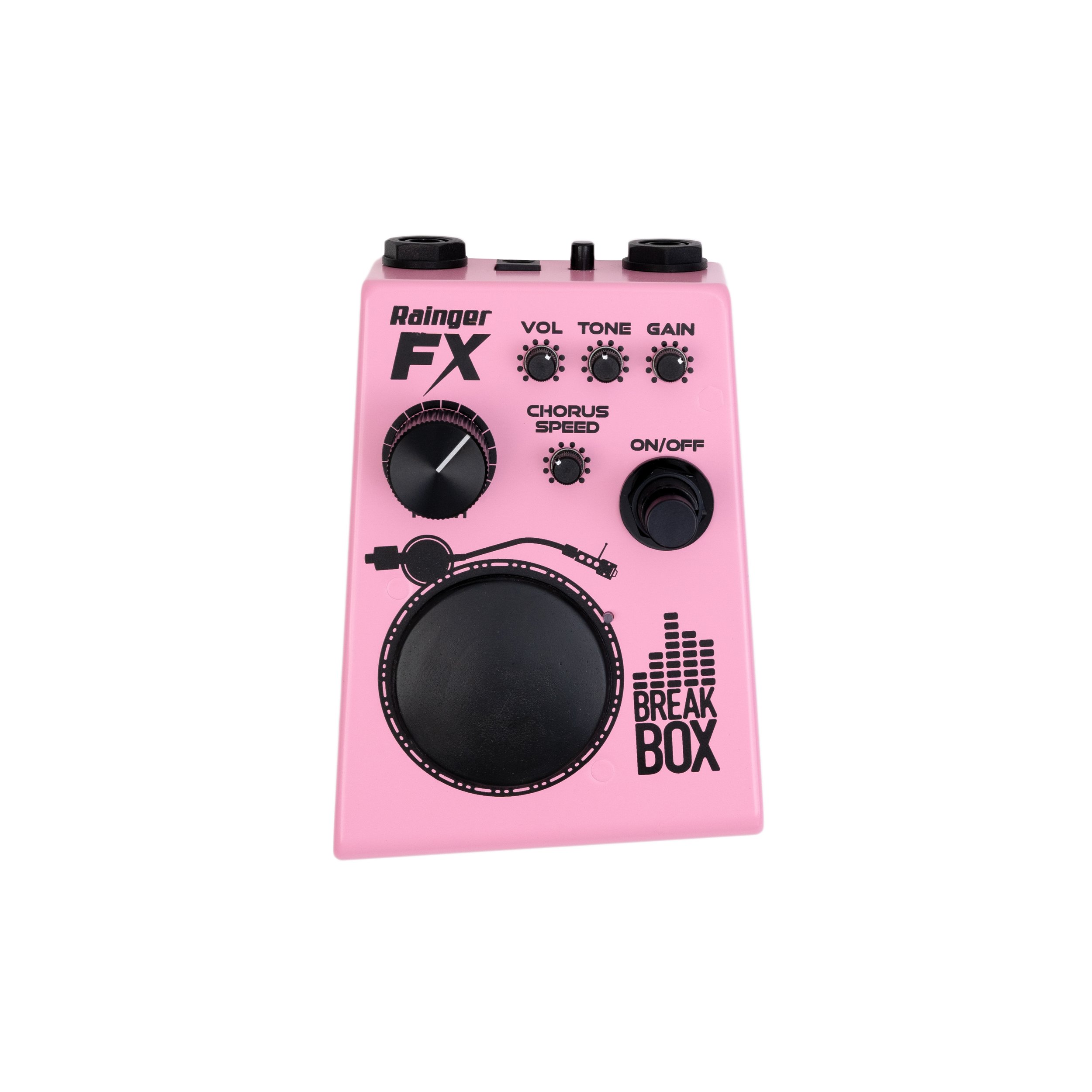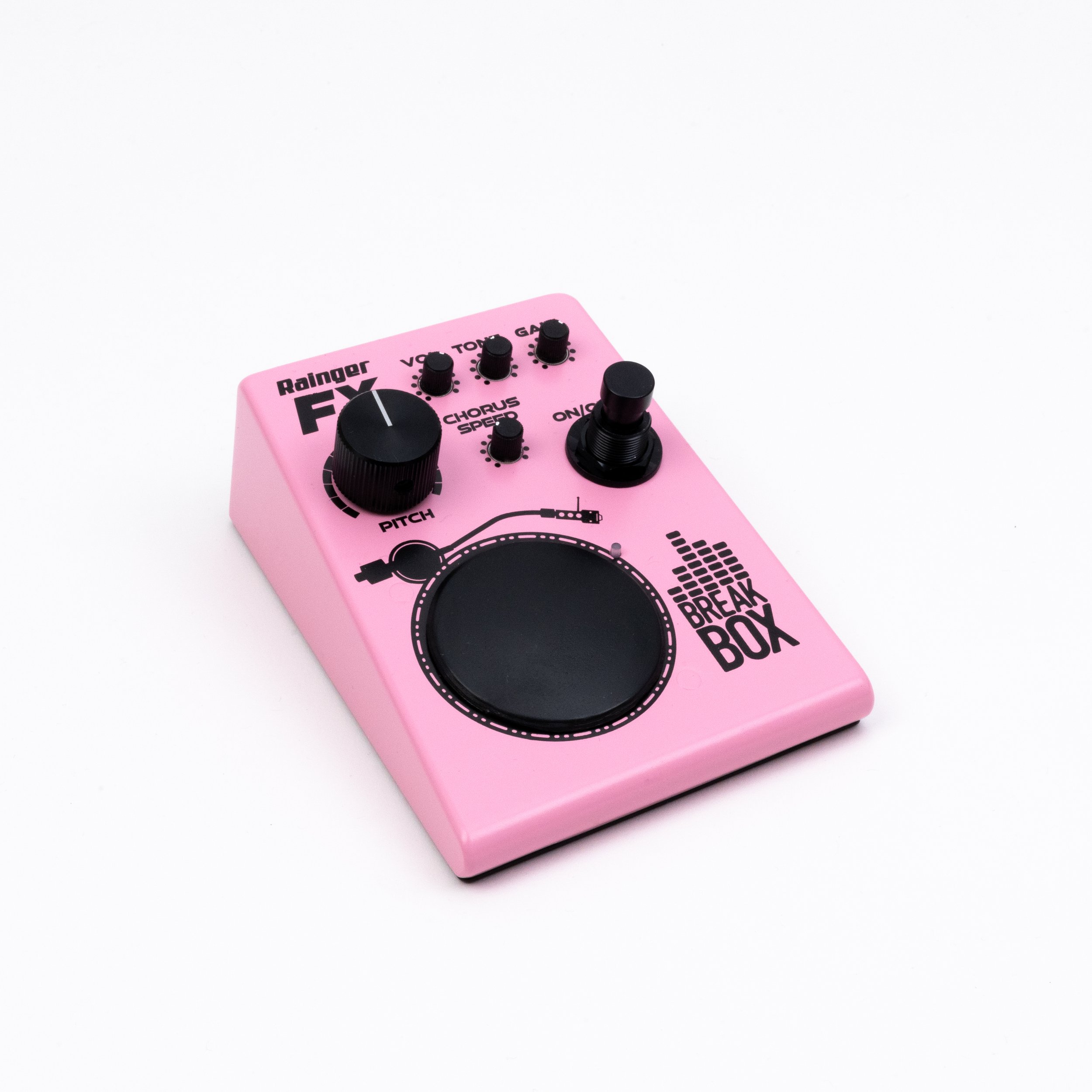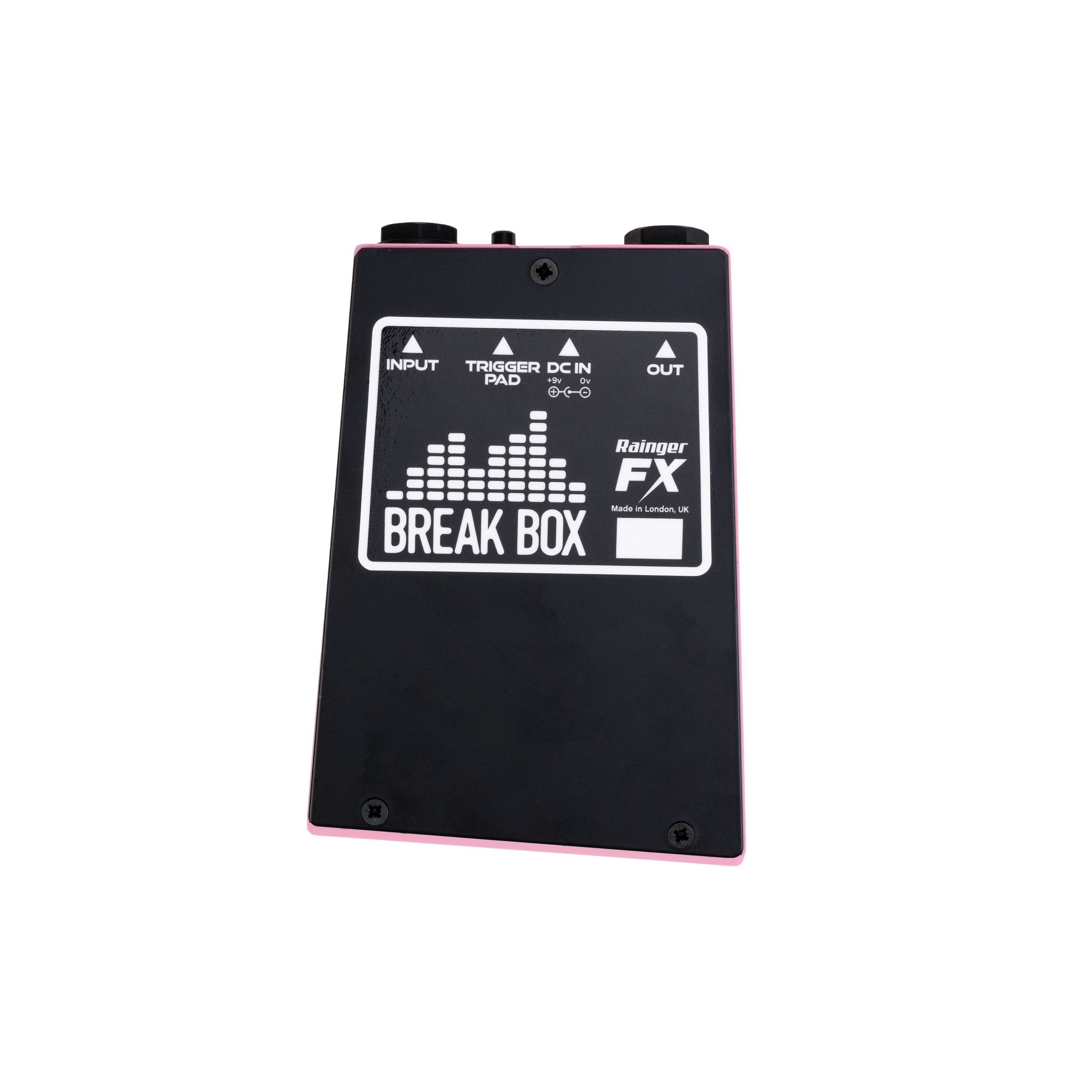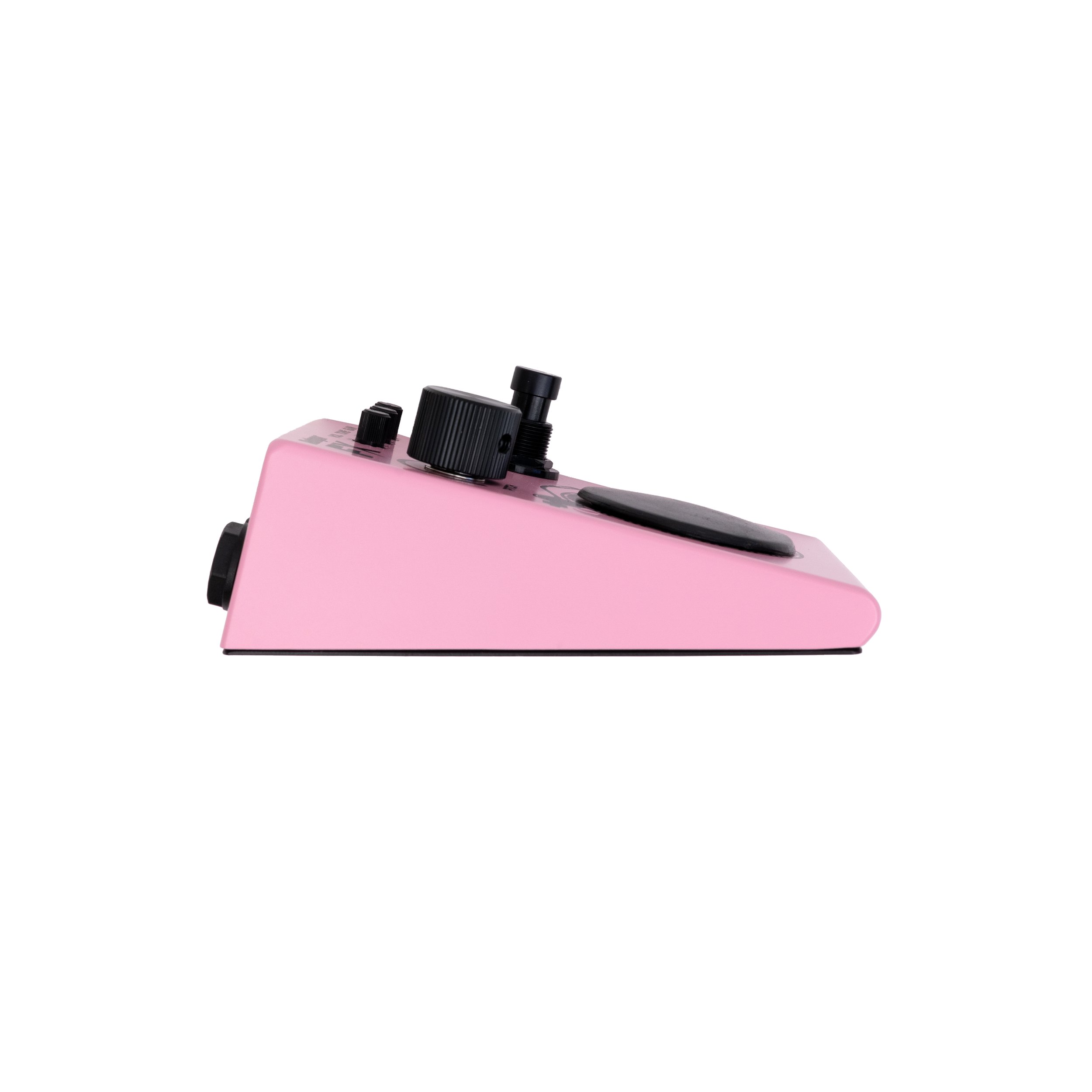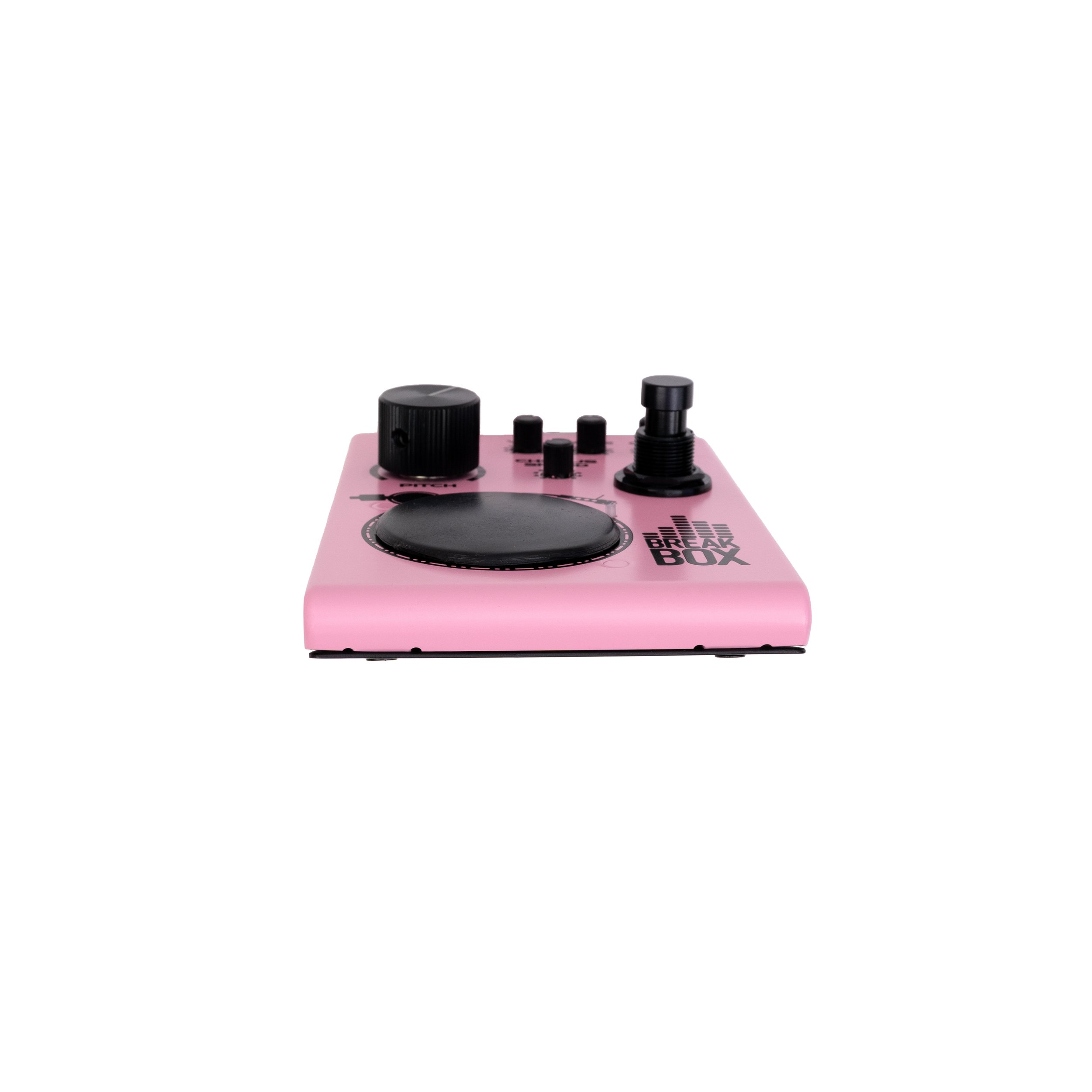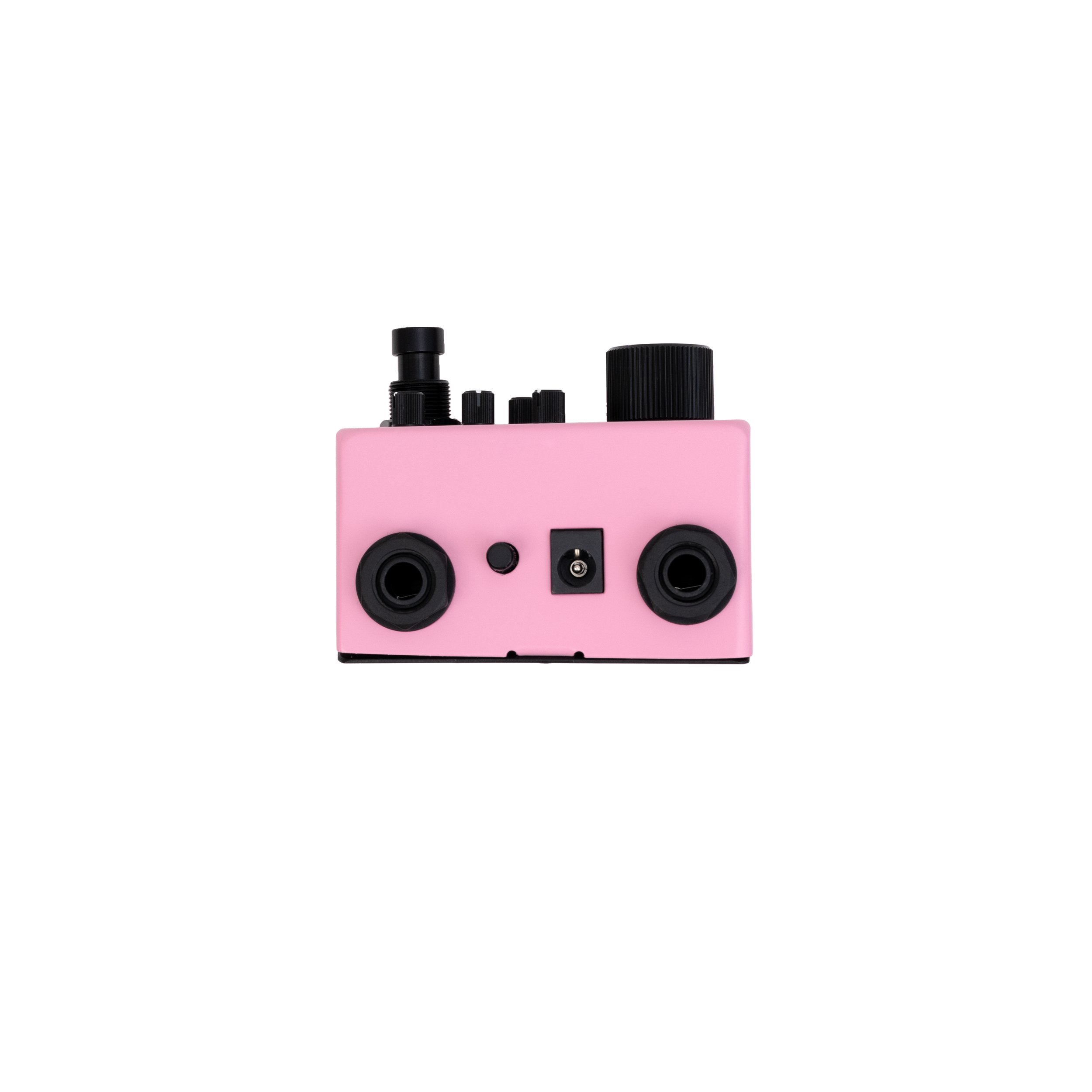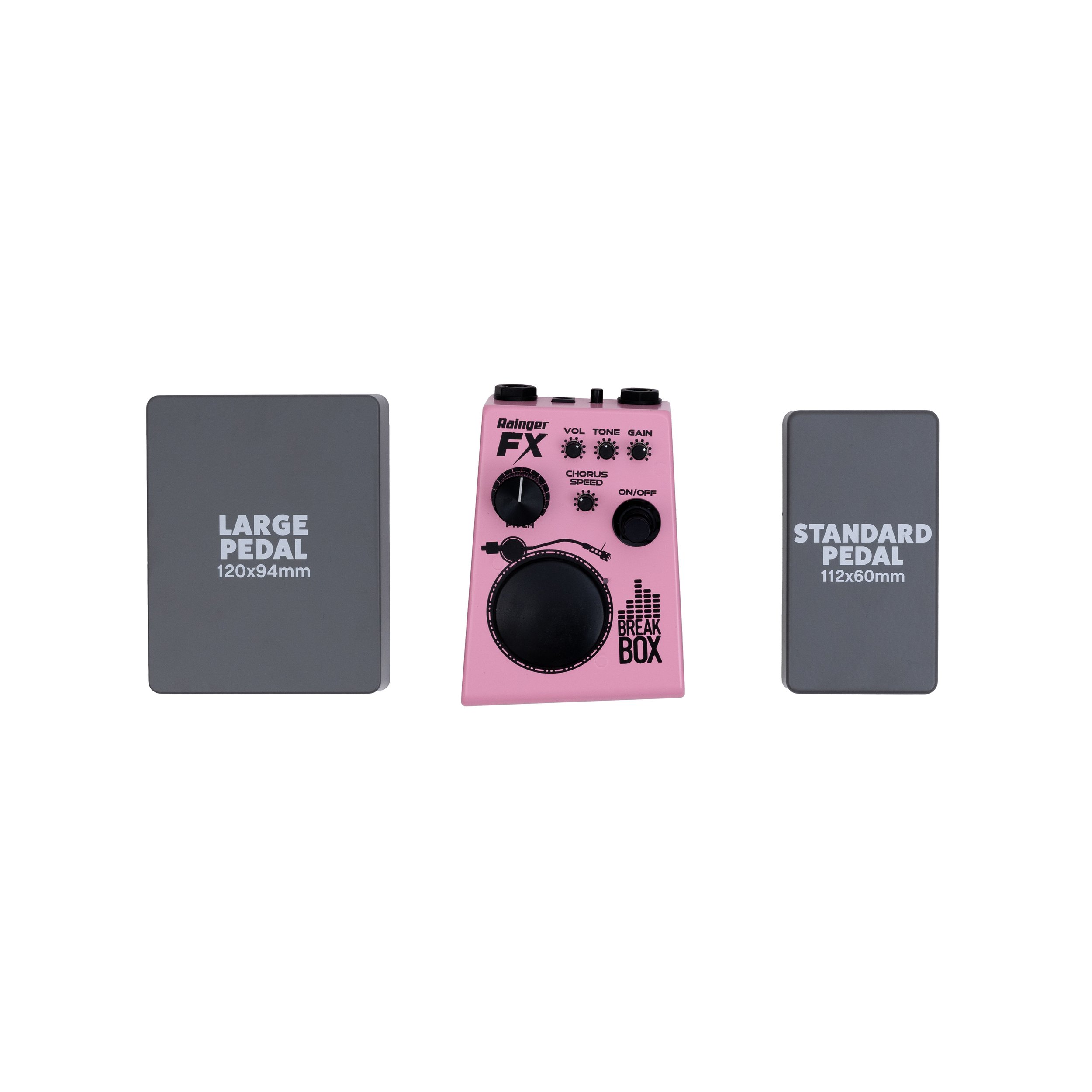Break Box
HUGE SOUND WIDE-FREQUENCY-RANGE DISTORTION PEDAL
VINYL RECORD SCRATCH SOUND – GUITAR TRIGGERABLE
SCRATCH SOUND INTERNALLY GENERATED, PITCH/SPEED CONTROLLABLE
TONS OF VOLUME ON TAP
HAS DELAYED CHORUS ‘ACTIVE SUSTAIN’
INCORPORATES TONEBENDER TONE STACK
UK buyers are entitled to FREE SHIPPING but will be liable to VAT - price including VAT £238.80
-
The Break Box distortion is a high gain drive pedal – with a few extra tricks up its sleeve!
Based on the Rainger FX El Distorto overdrive pedal from way back in 2009, the Break Box has the back half of a Tonebender added to it, the circuit taken directly from the Freakenbender – our Colorsound collaboration. The result is a stompbox with lots of low-end, good amounts of mids (not scooped), and some searing highs. Distortion goes from a light crunch to a high-intensity heavy distortion.
Active sustain
Hold any note and chord for a second or more, and a chorus effect fades in – audibly growing the sound. This pedal has active sustain, transforming it from in-your-face dry chunky attack into a 3D room-like churning howl! It’s like a wave coming from behind and pushing you on…..
You can adjust the chorus speed – from a slow twist to a fast psycho-wobble. Every long note-bend in a solo has extra flavour and meaning, every feeding-back chord now has movement. Because of the delay in the chorus appearing, you can play fast chords or note clusters – keeping all the accuracy and precision of modulation-free sound – with a glorious chorus bloom fading in on the longer-held bits.
However, even with all this going on the Break Box is totally quiet when it should be; a noise gate unobtrusively shuts down any hiss and hum when you’re not playing.
Vinyl scratch
But hang on – hold down the turntable pad on the pedal, and your guitar is transformed into a trigger for a record scratch sound! Like a DJ cueing up the guitar track that follows, you can keep the scratch short and choppy, or longer with the classic forward/reverse movement. The ‘pitch’ control adjusts not only the pitch of the scratch but also the speed (like when scratching vinyl for real). The sound is not a recording – it’s generated inside the pedal itself. A gentle random pitch variation keeps it sounding less ‘sampled’ and more human.
Strum dampened strings (ie go ‘wacka wacka’) for short triggers, or play an actual note for the longer up-down scratch.
The distortion part of the circuit is entirely analogue – tweaked over time to give the best sounds in all kinds of situations. The scratch, noise gate, chorus and chorus fade-up system are all digital.
There’s a hi/lo trigger sensitivity switch – to help active-output instruments trigger more controllably. The On/Off footswitch is true bypass.
The whole thing is housed in another Rainger FX custom enclosure, provocatively asymmetrical, in the tastiest pink and black.
-
Can the chorus be varied in any way other than the speed?
No – The delay before it starts is designed to keep it out of the way during faster sections of playing. The depth is fixed to the most satisfying. It fades up to be the same size as the non-chorus sound.
Can the chorus fade in be changed at all?
No – it’s designed to come in as soon as possible, but with enough of a pause to keep out of the way during fast notes/chords. The chorus can’t be completely disabled.
Can I adjust the scratch by how I play the guitar – in trigger mode?
Yes, but only the length of the scratch
Can the scratch trigger be locked on (as in a latching switch)?
No – it’s only momentary, while you’re actually pressing the pad.
Is the pedal digital or analogue?
It’s both – the main audio (distortion) part being all analogue.
What is it with you guys and asymmetric enclosures?! It messes bad with my OCD!
We occasionally make asymmetric enclosures just because we can, they’re cool, and they’re fun! It’s in our very DNA to strive to be ground-breaking, instantly recognisable, and extremely usable – so of course we would do this (despite the extra hard work it entails!). Don’t you love how the up-slope of the desktop gives a tiny bit easier access, how the turntable pad drops down to near floor level (check that lovely rolled edge!) and comes slightly towards you, enticing you to use it……?!
Also, I’d advise you to seek out some professional help with your OCD; it’s something I know people can learn to live happily with, and even to carry on using Rainger FX gear….
What’s the current draw of the pedal?
About 60mA
What are the pedal dimensions?
88mm at its widest point, 127mm at its longest point (near to far), and 50mm high (unpressed footswitch)
What’s this – Rainger FX using part of a ‘classic’ circuit by someone else??!
You mean the Tonebender bit? Well it was something we originally made at the suggestion of Colorsound themselves, when we designed and made the Freakenbender with them. However almost all electronics originates from previous circuits somewhere or other. Nonetheless the whole spirit of the Break Box feels new – though inspired by music from the past.
Can the noise gate be adjusted at all – or switched off?
The only adjustment possible is by altering the signal volume of what’s going into the Break Box, changing the effect of the gate threshold.

